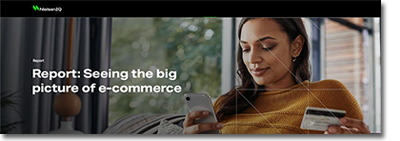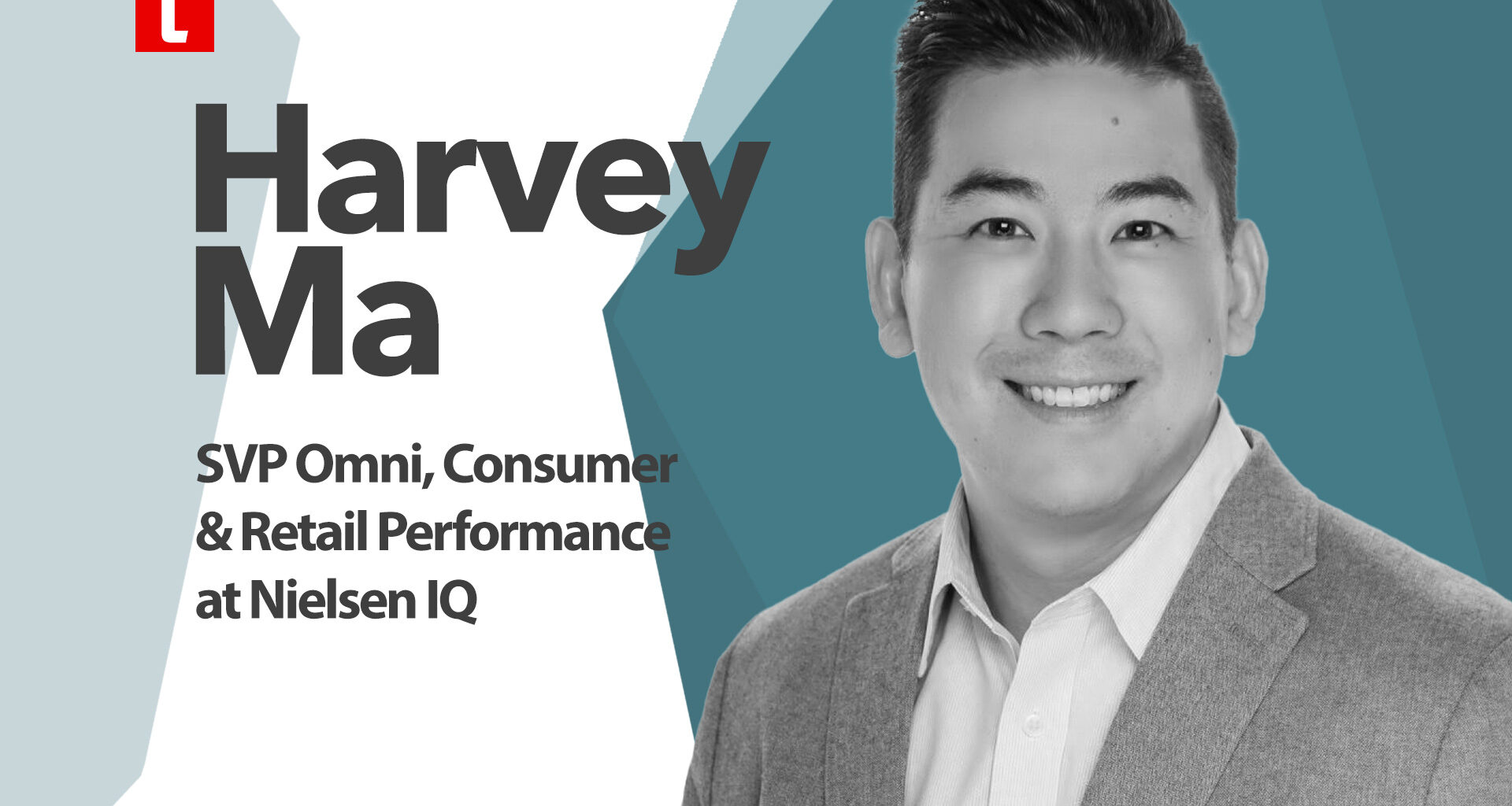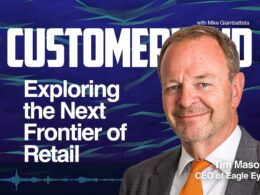On the heels of the release of the NielsenIQ E-commerce Snapshot Report, we sat down with Harvey Ma, Senior Vice President – Omni, Consumer & Retail Performance, to talk about some of the surprises, highlights and key findings. In this brief conversation we touch on some of the new ways consumers are “impulsing” and how retailers can conquer the proliferation in touchpoint and channels.
You can download NielsenIQ’s E-commerce Report here. Find the full transcript of our conversation below.
What exactly does NielsenIQ do?
Harvey Ma: So NielsenIQ, we are a global information services company. What that means in layman’s terms is that we try to aggregate and combine as much usable data as possible. So that clients on the manufacturer retail agency side can take that data and generate some really cool actionable insights and how that applies to people. Today. There is just so much data falling out there, as we all know, a lot of this data was fantastic. In fact, you know, Nielsen was the company that invented the term market share many, many, many years ago, and that term carries through today. However, it’s changed because consumer behavior has changed so dramatically. The methods of, for example, receipt capture as one of our biggest pieces of our business, they’ve changed. I mean, it used to be a consumer physically go to a store, you get a receipt, we had technology, they would scan the receipt, you get some really great insights, but now that’s getting much more difficult because the world is becoming much more complex.
Technology is starting to create complication in terms of how you can receive and, uh, actually glean that data out. Those types of things are why we have to create new technology that normally captures that in terms of the privacy constraints that consumers want, but also even retailer constraints. You know, they, as you know, Walmart target, um, Amazon, they also want to monetize their own data. So it makes it very difficult to kind of aggregate all that in one spot. And so our mission is to do that and, and really we like to say, create the easy button. So folks can get lots and lots and lots of data, but actually be able to synthesize all that in one de-duplicated spot.
On channel proliferation …
Harvey Ma: Yeah. You know, we’ve got a really great case study on this one where it’s very, very simple in our minds in terms of how to break down that vast quantity of data. The most important thing for us is we’ve got a tool called Omnisales. It’s just the de-duplication of data, which is if you look at brick and mortar sales just by itself, and then online sales by itself, in many cases, it’s hard to tell where that shopping journey actually originated. And so being able to split those two apart to understand where consumers actually starting their journey and how it’s being fulfilled, that’s the premise of Omnisales, which is to show a very accurate sales and share report, which breaks down brick and mortar online. And we de-duplicate the stuff that’s kind of in the gray. So all the things that could be considered one or the other to provide a very clean line.
What that does from a leakage standpoint is then you, as a retailer can tell if I’m truly growing. Uh, the case will actually highlight my two retailers, both growing at a fairly healthy rate. However, you do one double click within the report and you’ll see that the shifting behavior, so where consumers have shifted from, in store to online for one retailer is dramatically higher than the other one. So our question is retailer a, does that truly mean that your online sales growth is incremental or are you simply just shifting your consumer from an in-store environment to an online? And that seems like it’s very simple to do, but in this example, you know, you’ve got categories where, for example, haircare 164 different retailers, so the same product. So then how do you tell, and that’s what the report tries to break down and what the tools we’ve created help break down.
On impulse purchasing shifts …
Harvey Ma: So, you know, back in the day when I was a buyer for a large retailer, we always talked about, um, checking of the future activity and impulse activity. This is just one example of Michael, just how things have shifted. And at the time C-lane activity, impulse activity was always the things that you would characterize in your head as snacks, magazines, batteries, gum, those types of things. The impulse report that you’ll actually see is things like frozen chicken, frozen foods being in impulse category in an Omni world, you know, as a merchant, before those were categories that we never would’ve even considered because it was more about in store space and location and kind of impulse purchase. But now what you’re seeing is that buying behavior, because you’ve got this right in front of you all the time, it’s much easier for consumers to think of like, oh my goodness, I forgot to buy X, or I bought this.
And so I need to buy that. And so our question at grocery shop was what is the definition of impulse moving forward and how that transit from your question is just we’re asking retailers and manufacturers to just rethink what you traditionally thought was a multiple or an impulse purchase because in the context of an omnichannel environment, that behavior has changed quite dramatically. As you can see from some of the numbers in the reports, the definition of impulse is just, I had not planned to buy this when I bought this, that’s literally the easiest definition we have. And then anything that’s planned is like it was on a list or on my, um, plan, things of activities or S to buy. And then if you look at how that changes in an omnichannel world is the prior definition of impulse was what you could physically see around you was what retailers tried to build to impulse and drive that behavior right now it’s anything that a consumer could be.
I mean, think about the music you’re listening to the signals that you’re seeing, the environment that’s around you, whatever is around you. When you’re on your device, starting your shopping trip could be considered an impulse driver. We’ll talk about probably digital media later today because that’s, that’s another driver of that. But think about what that means now for a retailer and a manufacturer where anything that could be going through the environment, your brain, your eyes, your ears, your nose at the time that could drive an impulse purchase. And so I would say the definition hasn’t changed, which is it, wasn’t something I had planned, but a trigger prompt me to buy that. It’s just, those triggers are so vast now because when people are shopping, they’re probably being, um, multitasking, they’re doing all kinds of other things. And all of that, those are the questions that’s gonna prompt this kind of new, what we call consumer impulse journey in an omnichannel world.
Um, we, we always joke like, you know, movie theaters there, it was rumors for long time ago. They, they flash those Coke ads every once in a while, you know, in the, in the kind of preview. But, but, but think about like what that translates into like that was kind of a concept way, way back in the day to kind of drive other signals, other behaviors from a consumer psychology standpoint to prompt purchase. We also talk about like casinos pumping in the smell and the sounds of, you know, money falling from the slot machine. Fake bakery smells being pumped through retail stores, all kind of used to prompt impulse. Well now in an omnichannel world, like think about how many signals prompt impulse in the environment, around people, anytime they’re shopping on their devices and their phones. So again, the question is, what does that mean for you? How do you in influence buying behavior now that things are different.
 You can download the NielsenIQ e-commerce report here.
You can download the NielsenIQ e-commerce report here.












